Formation
Mark Reigelman II
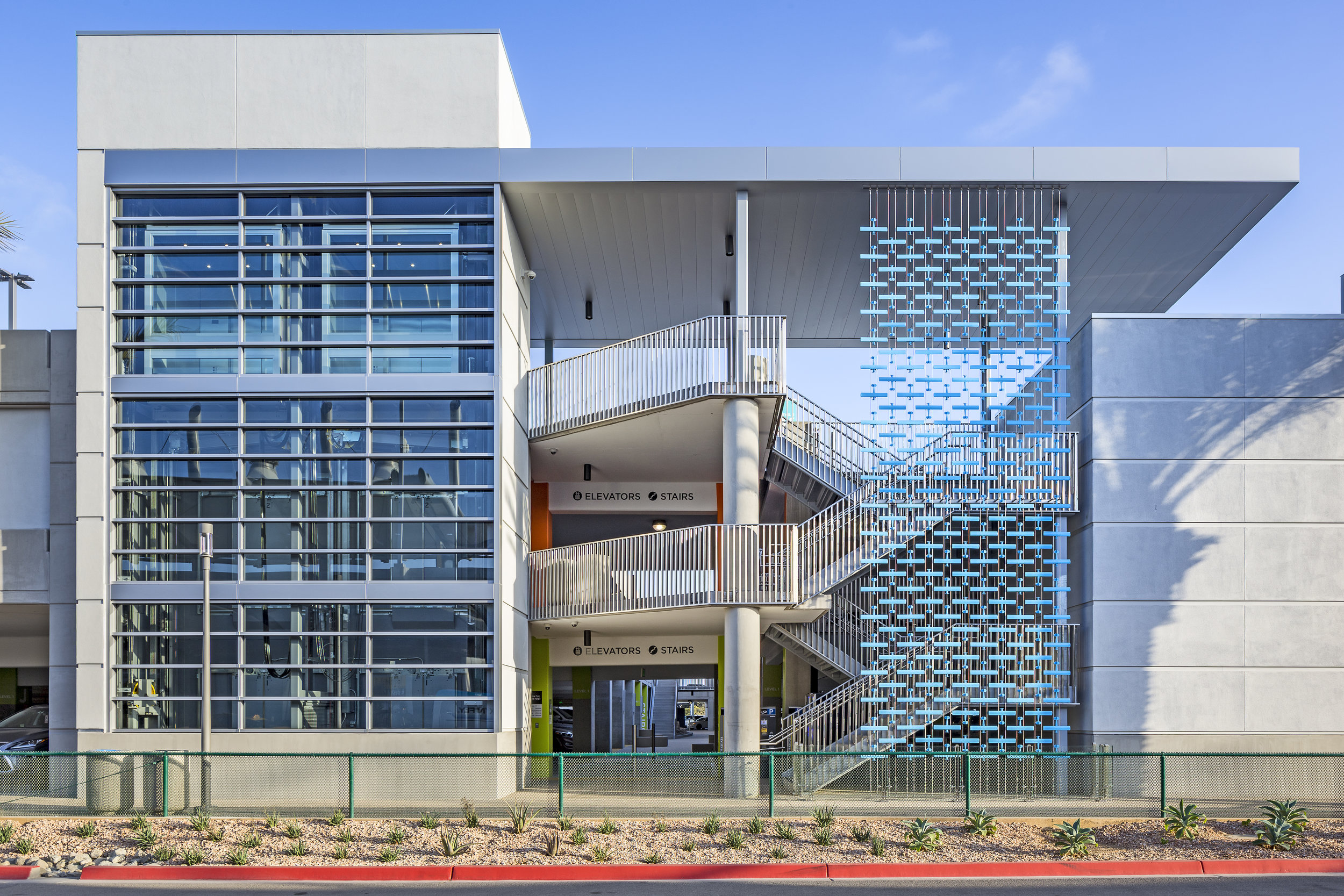
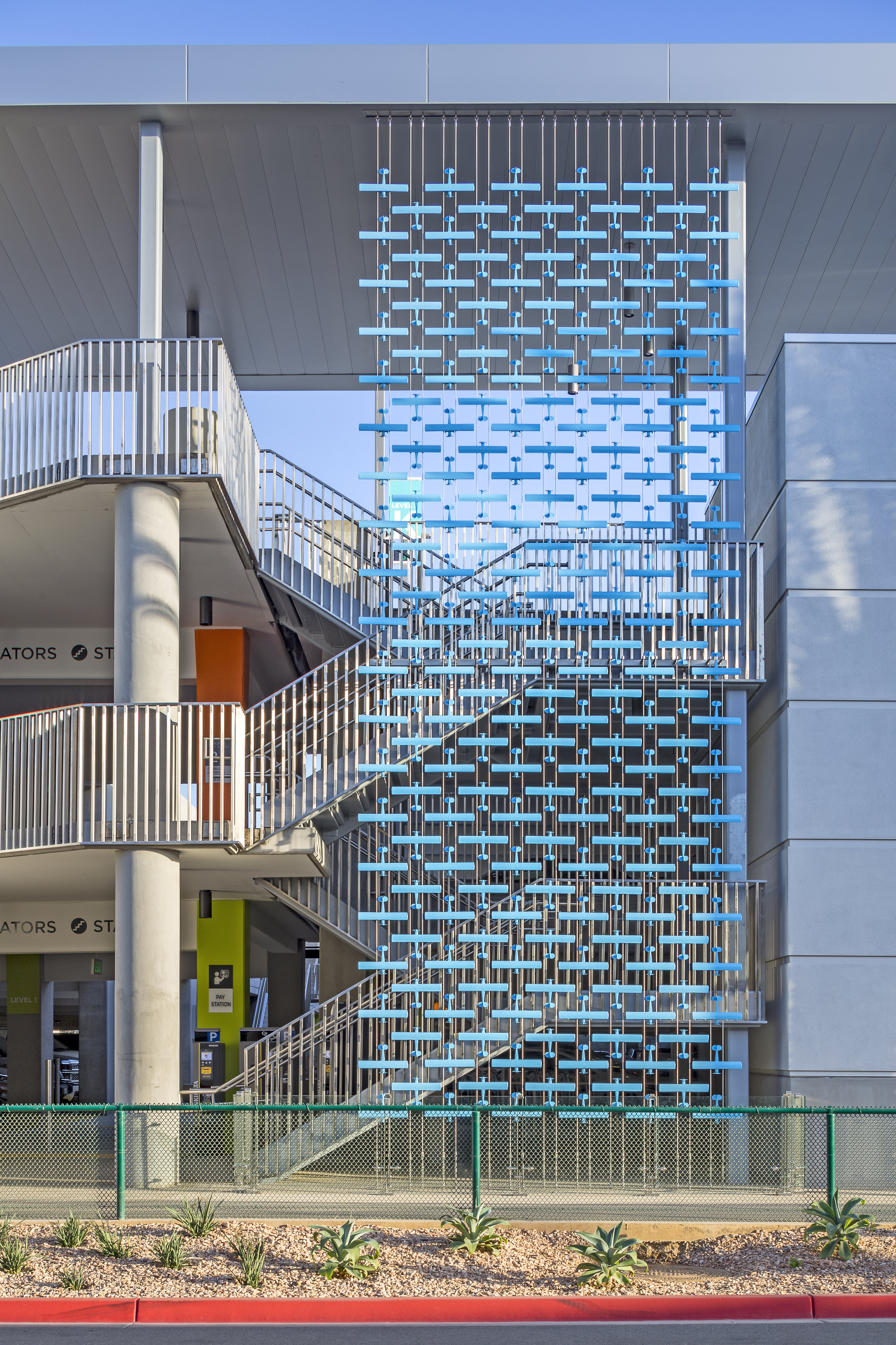
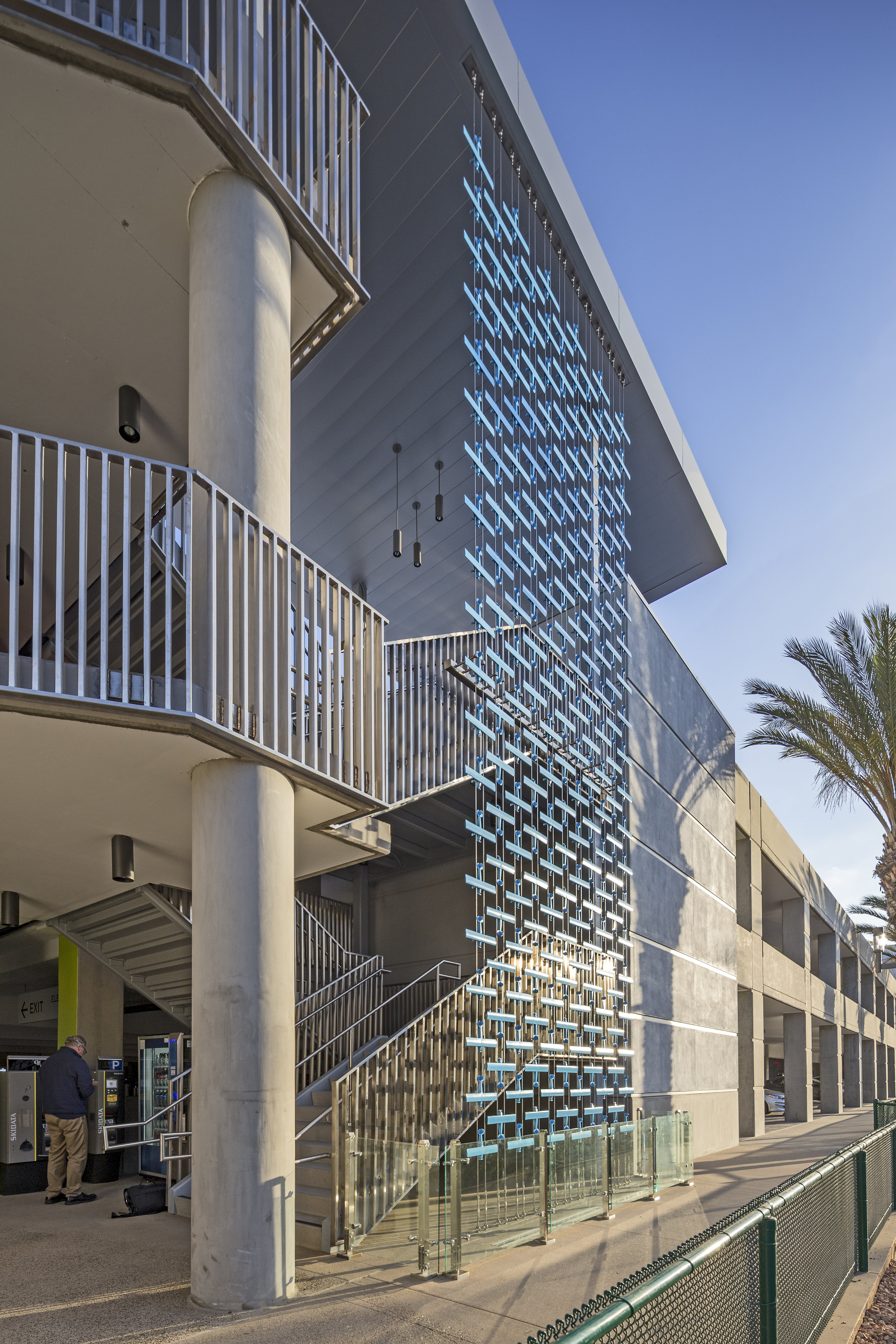
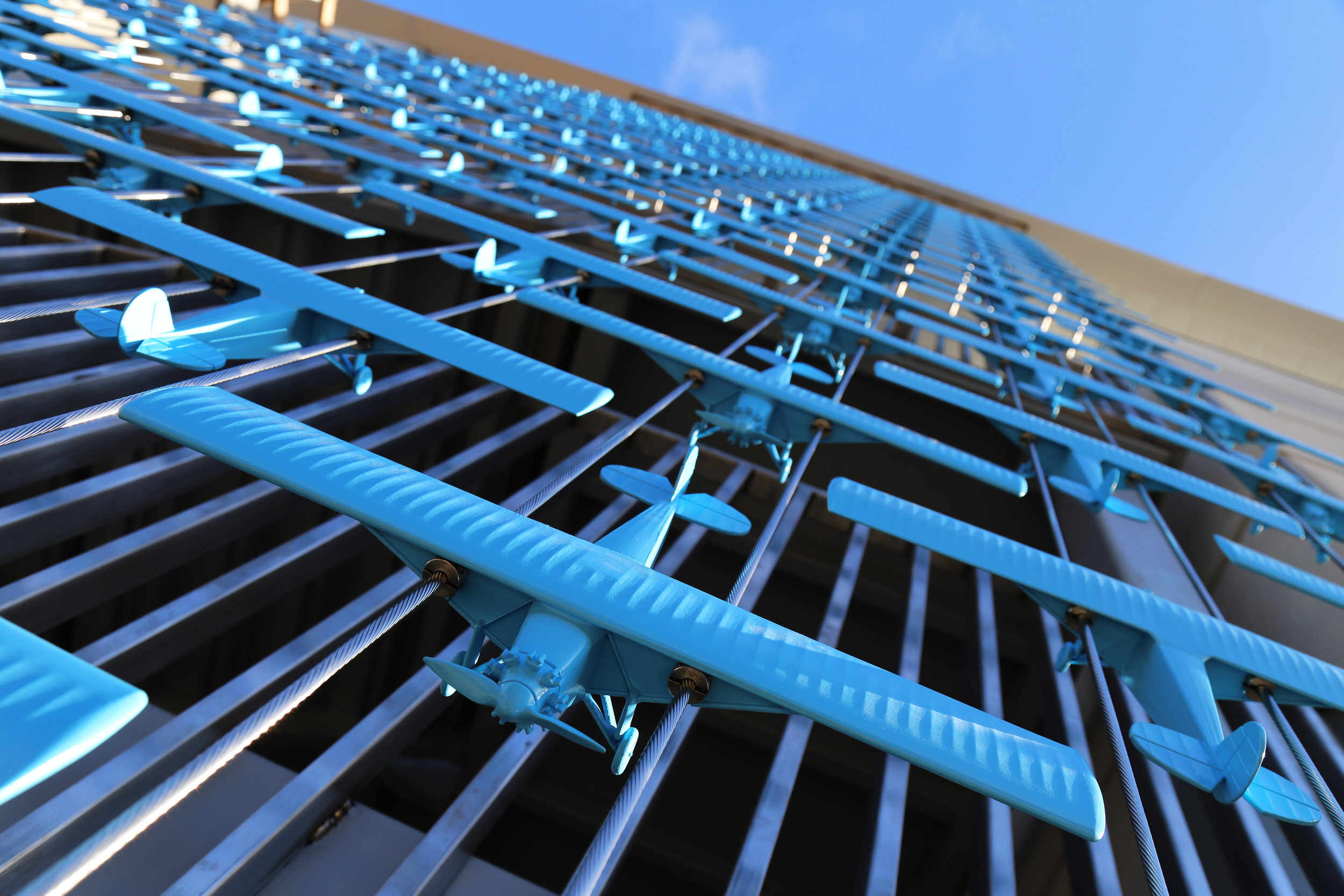
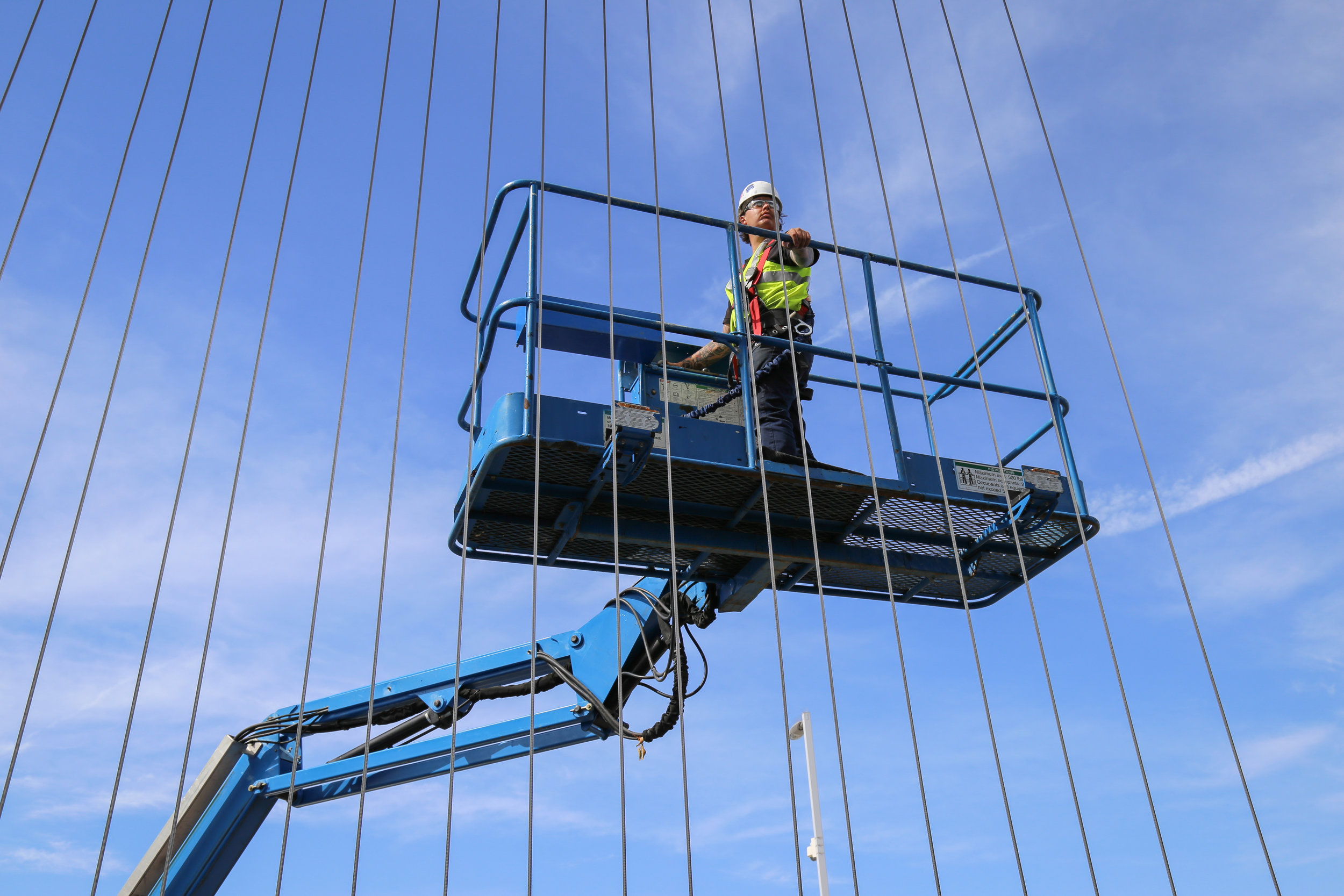
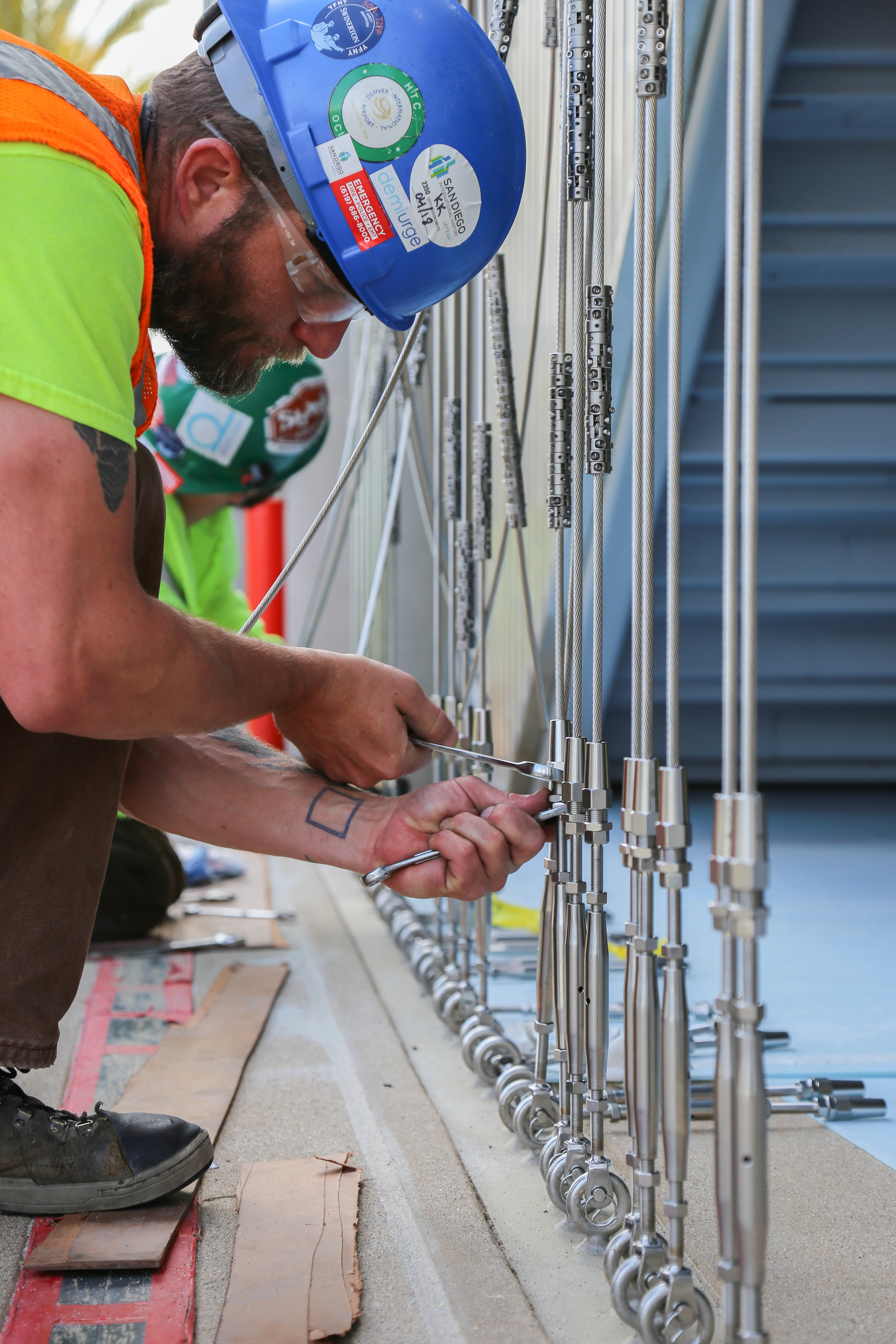
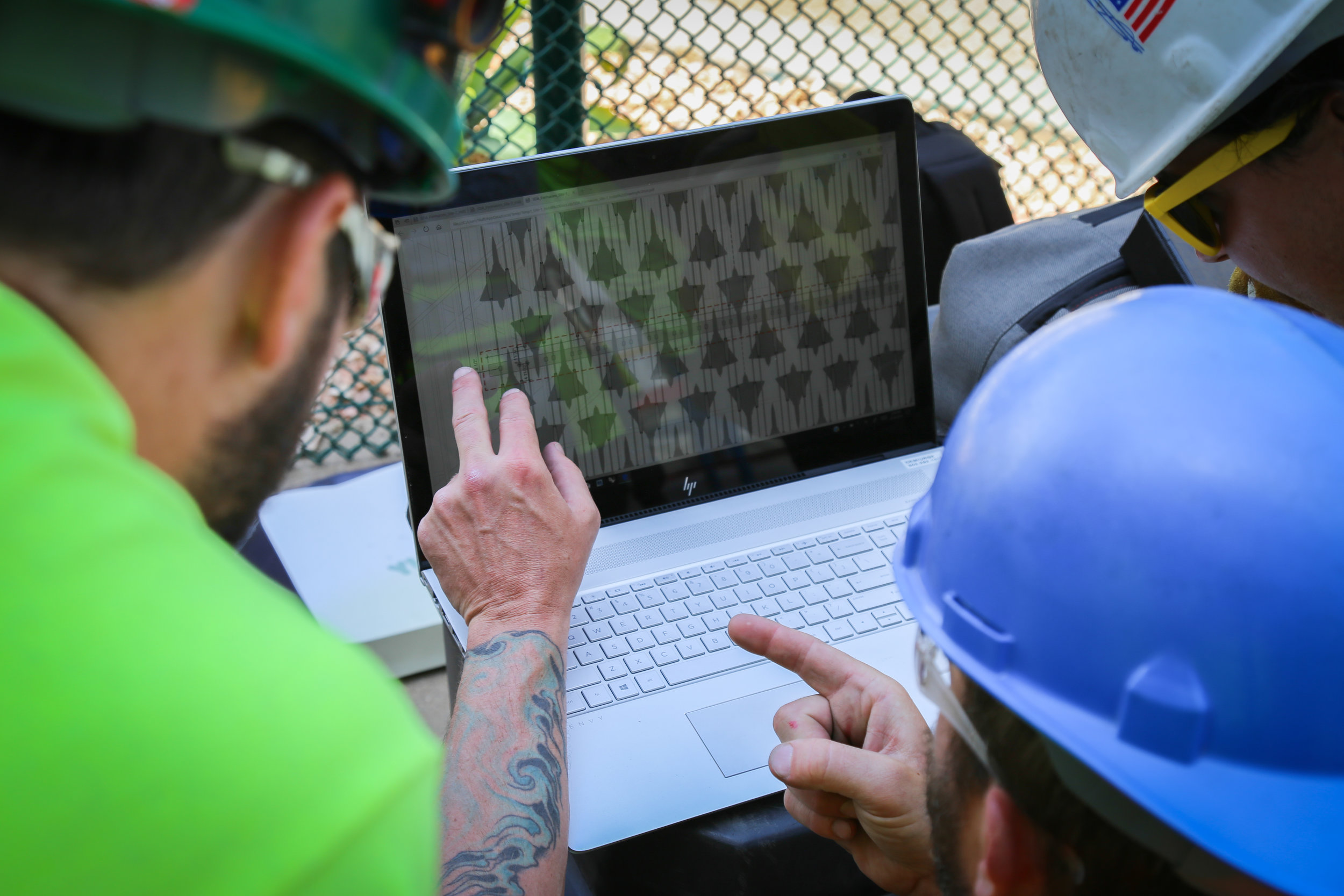
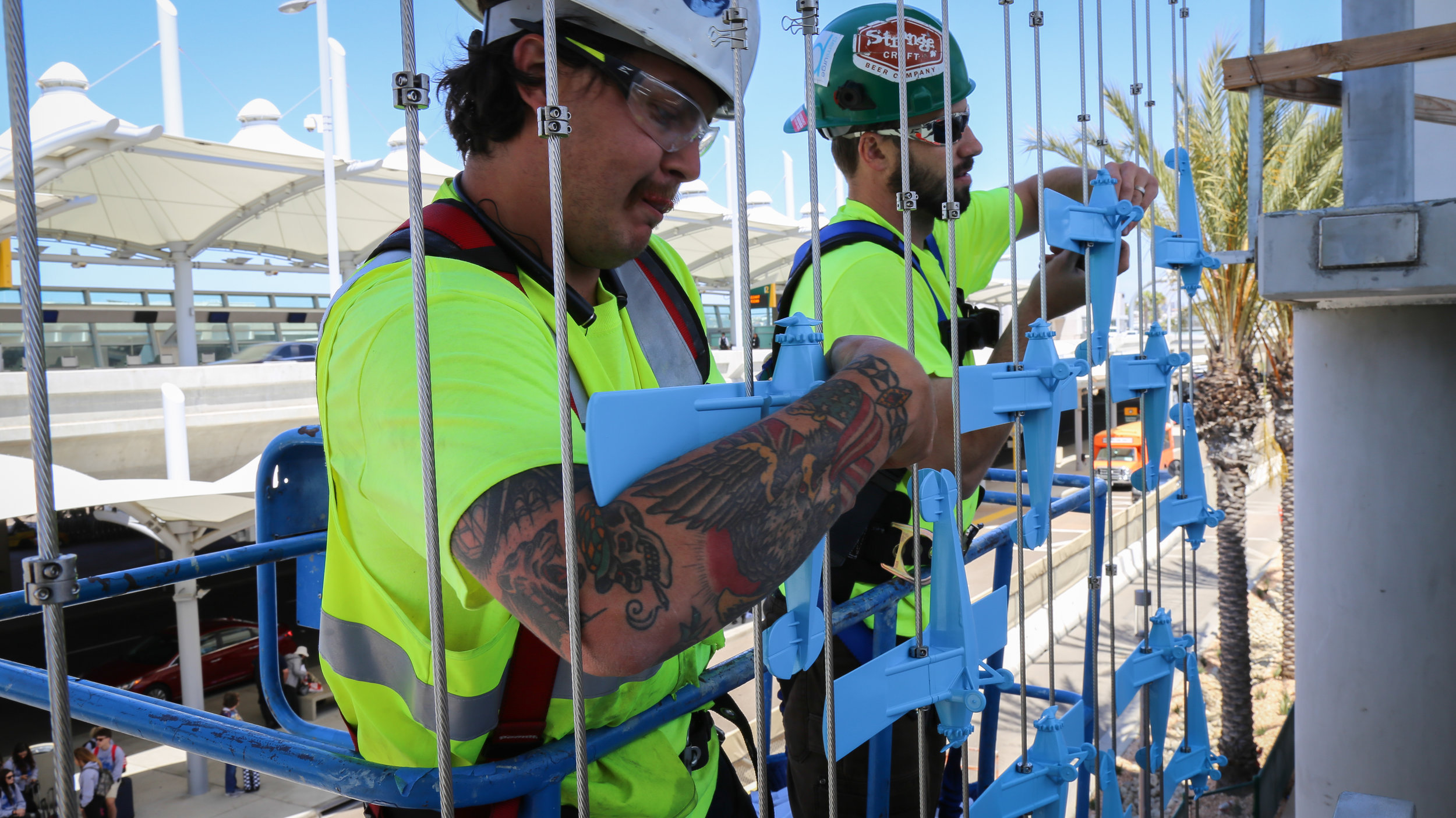
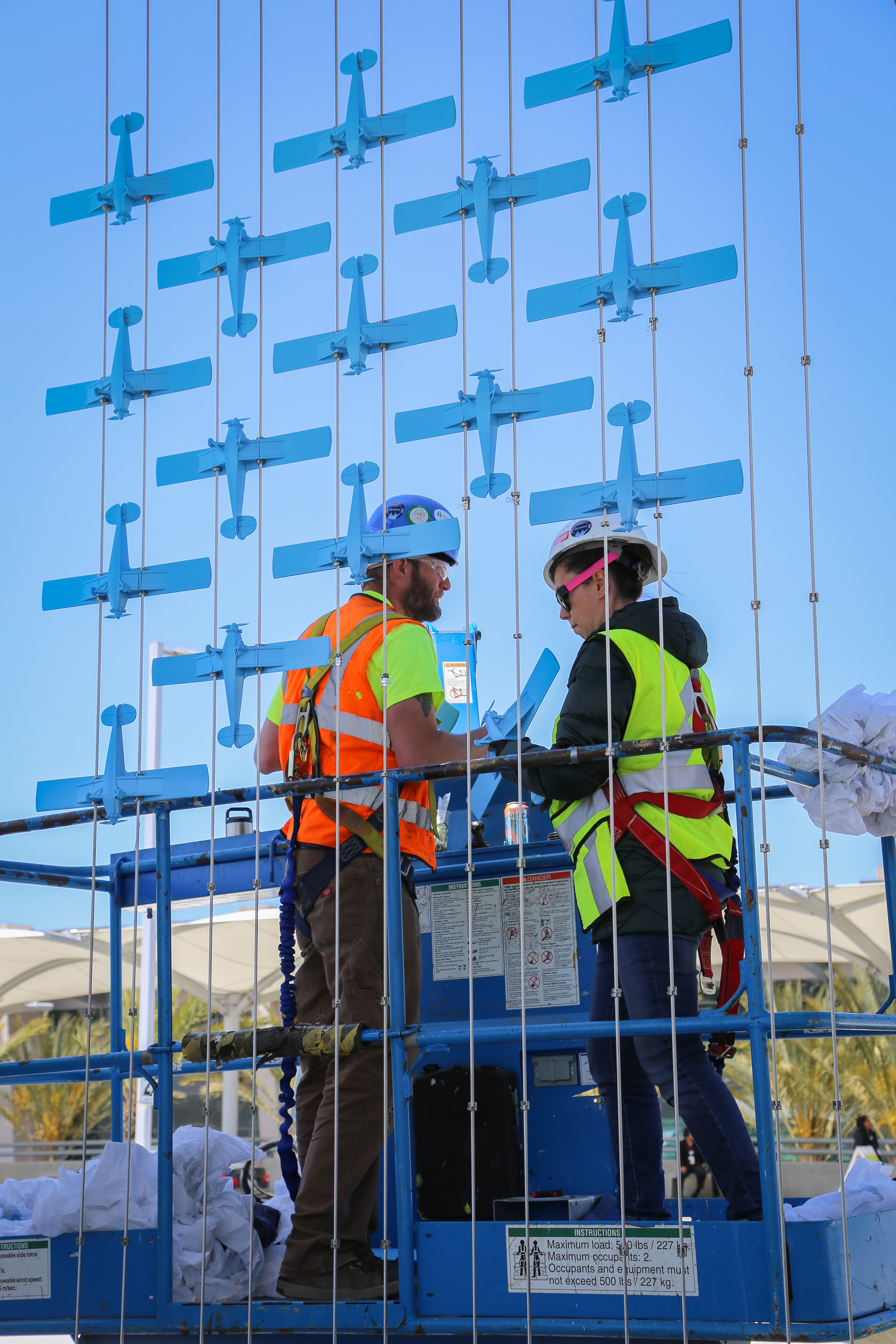
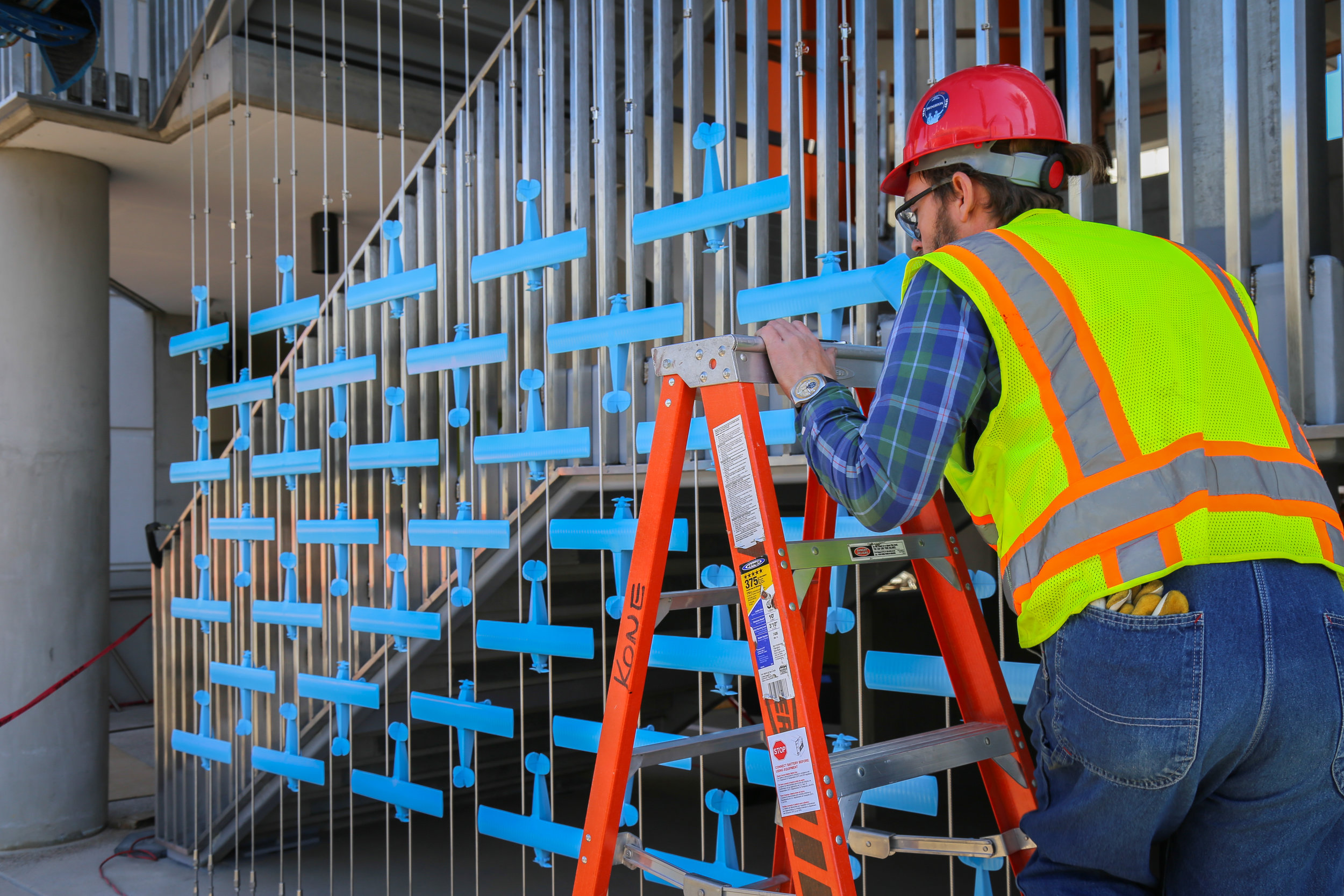


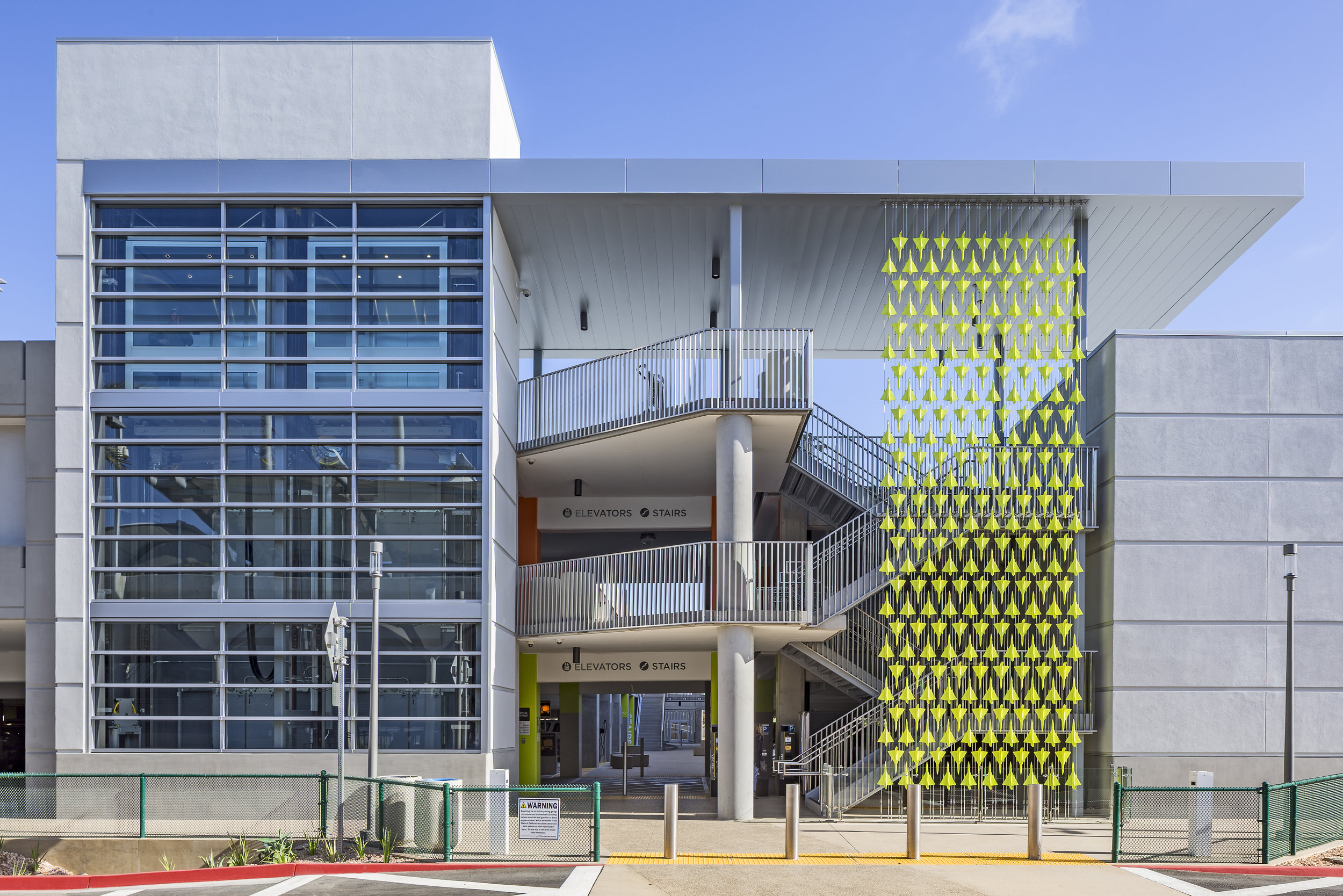
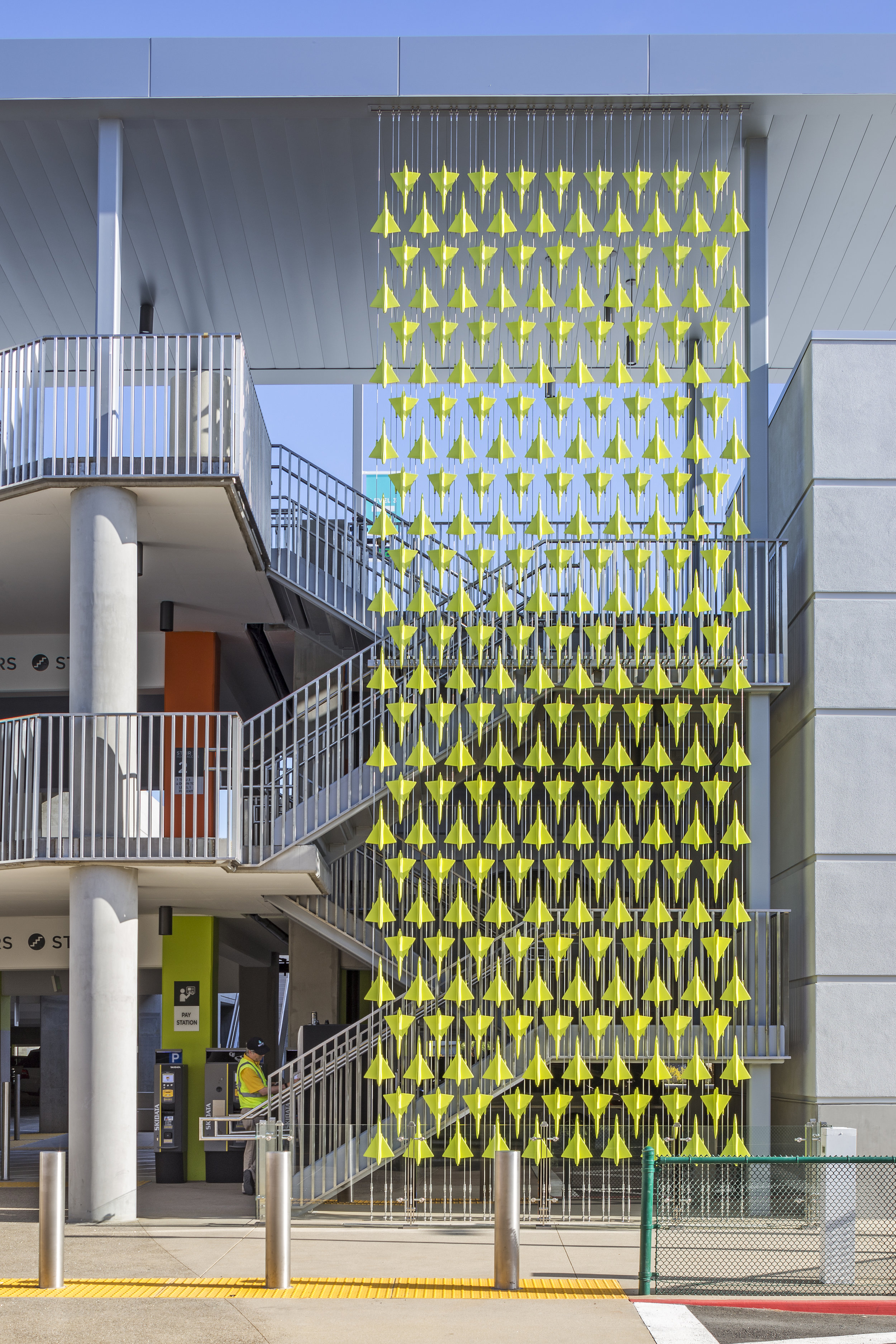
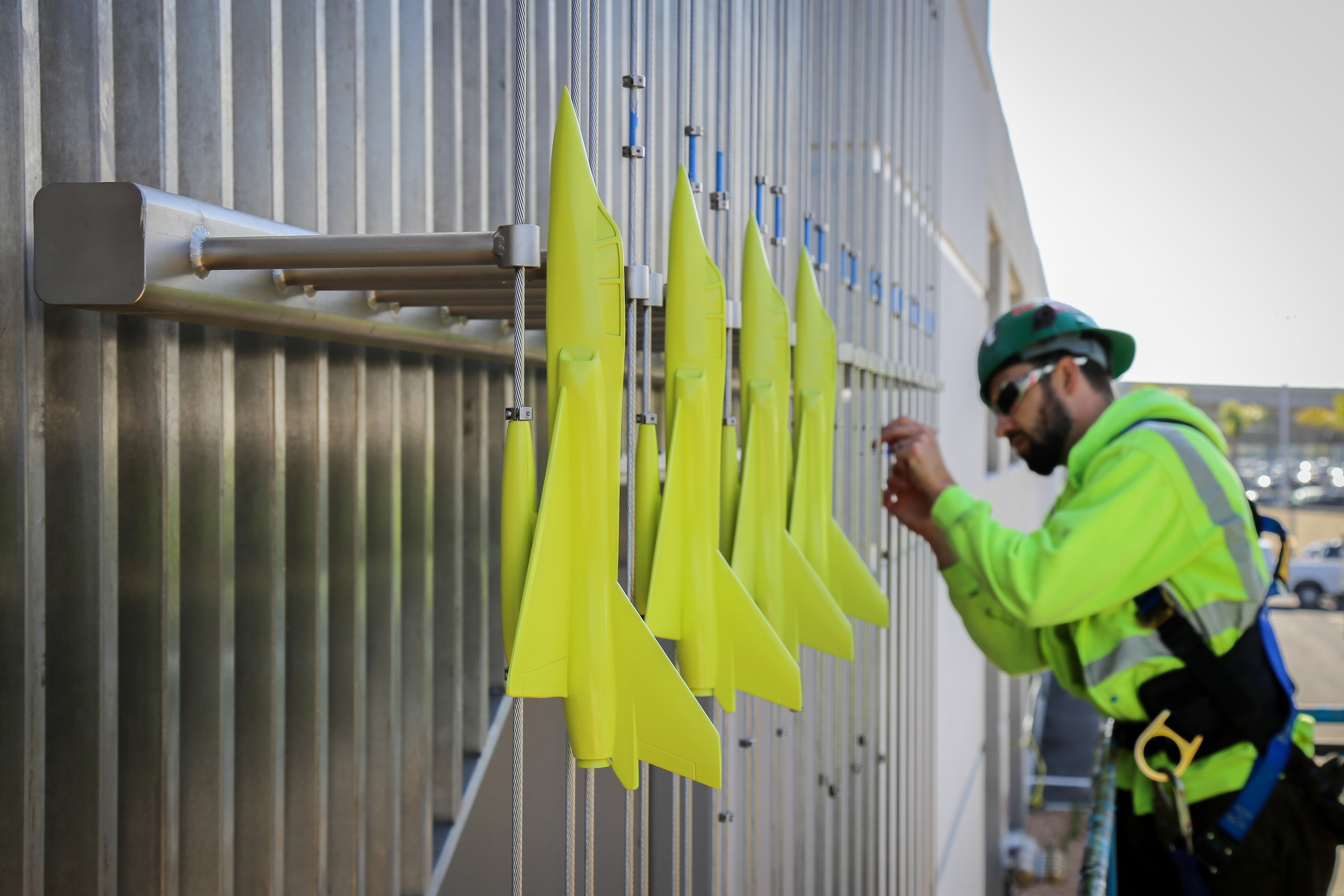
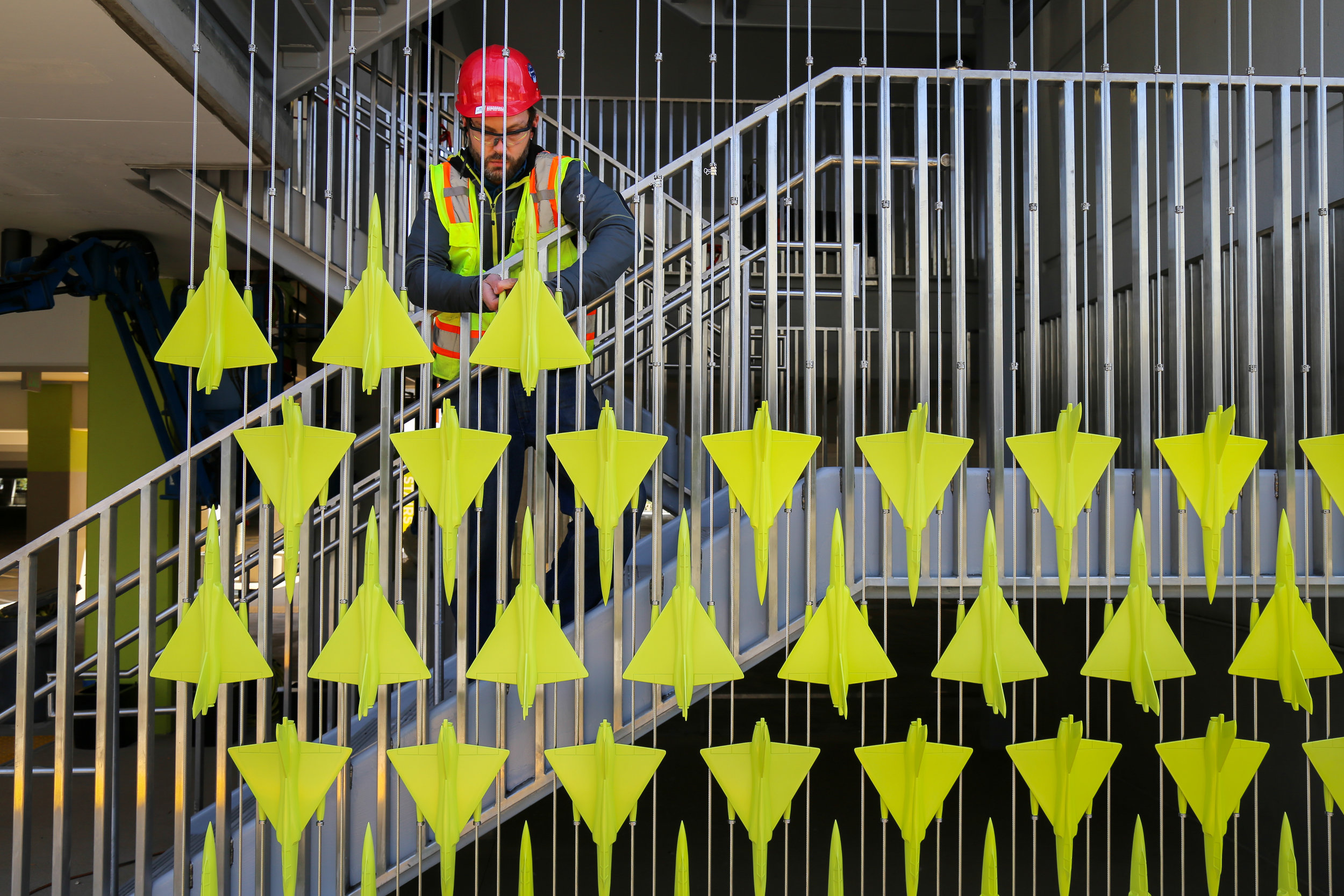
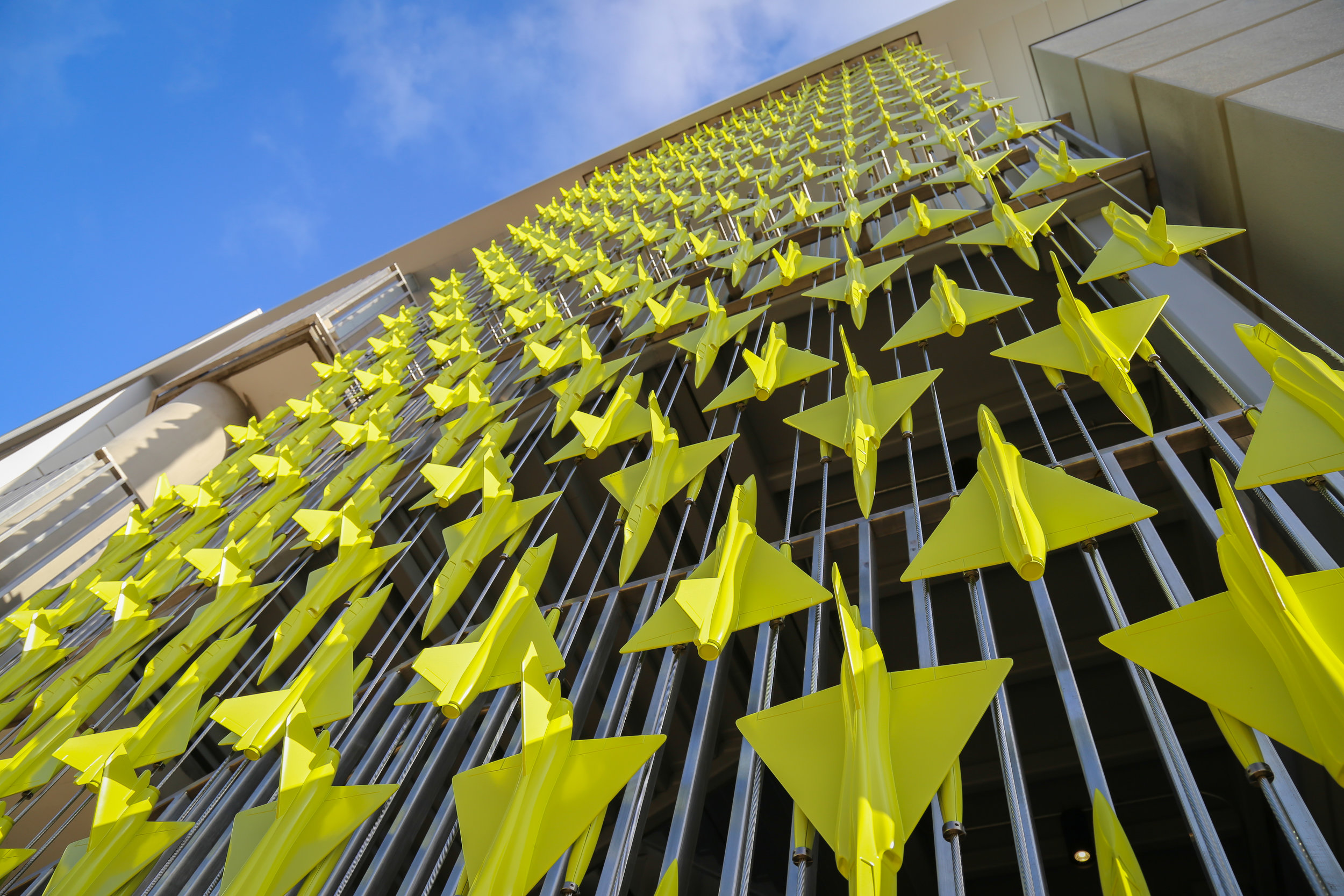
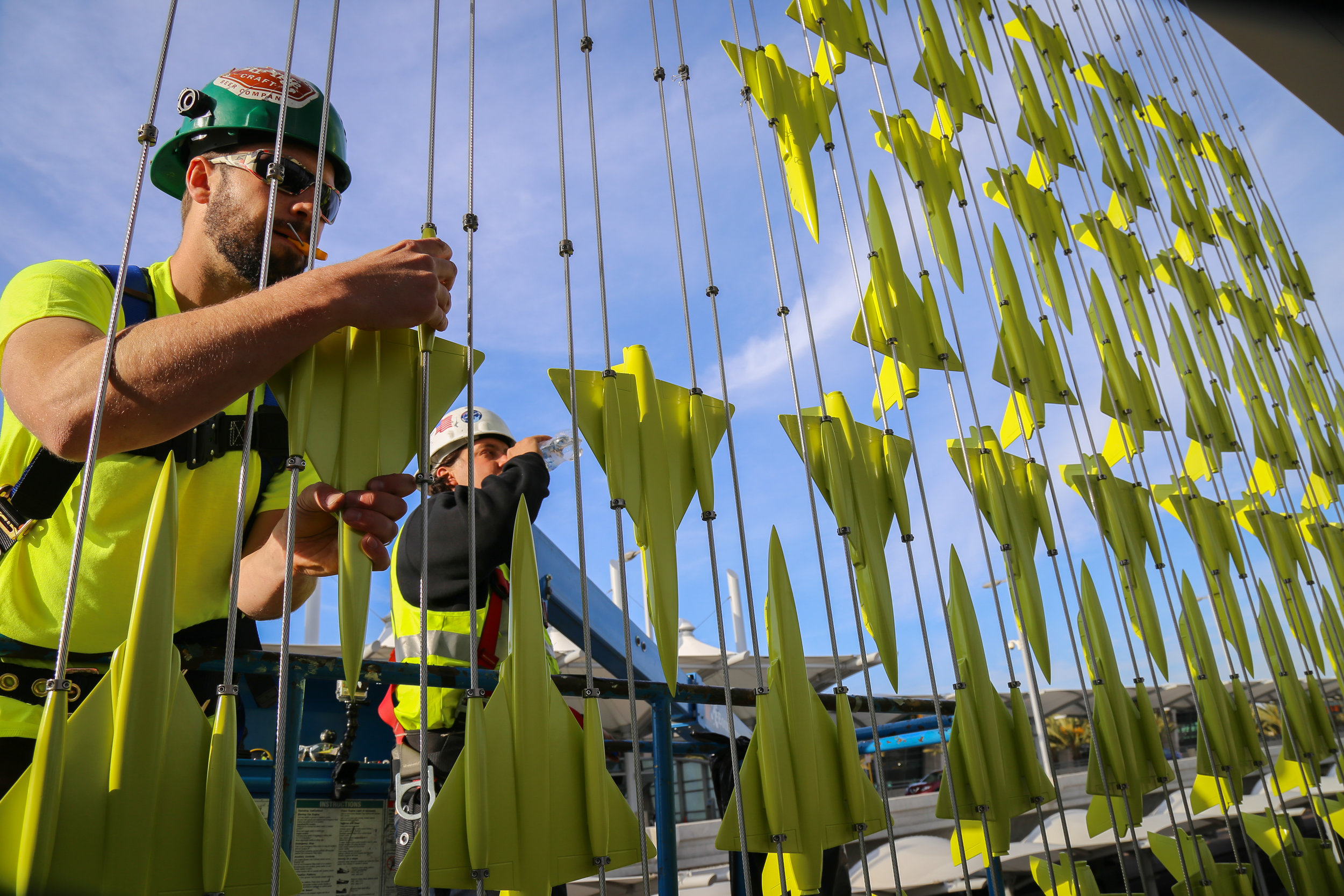
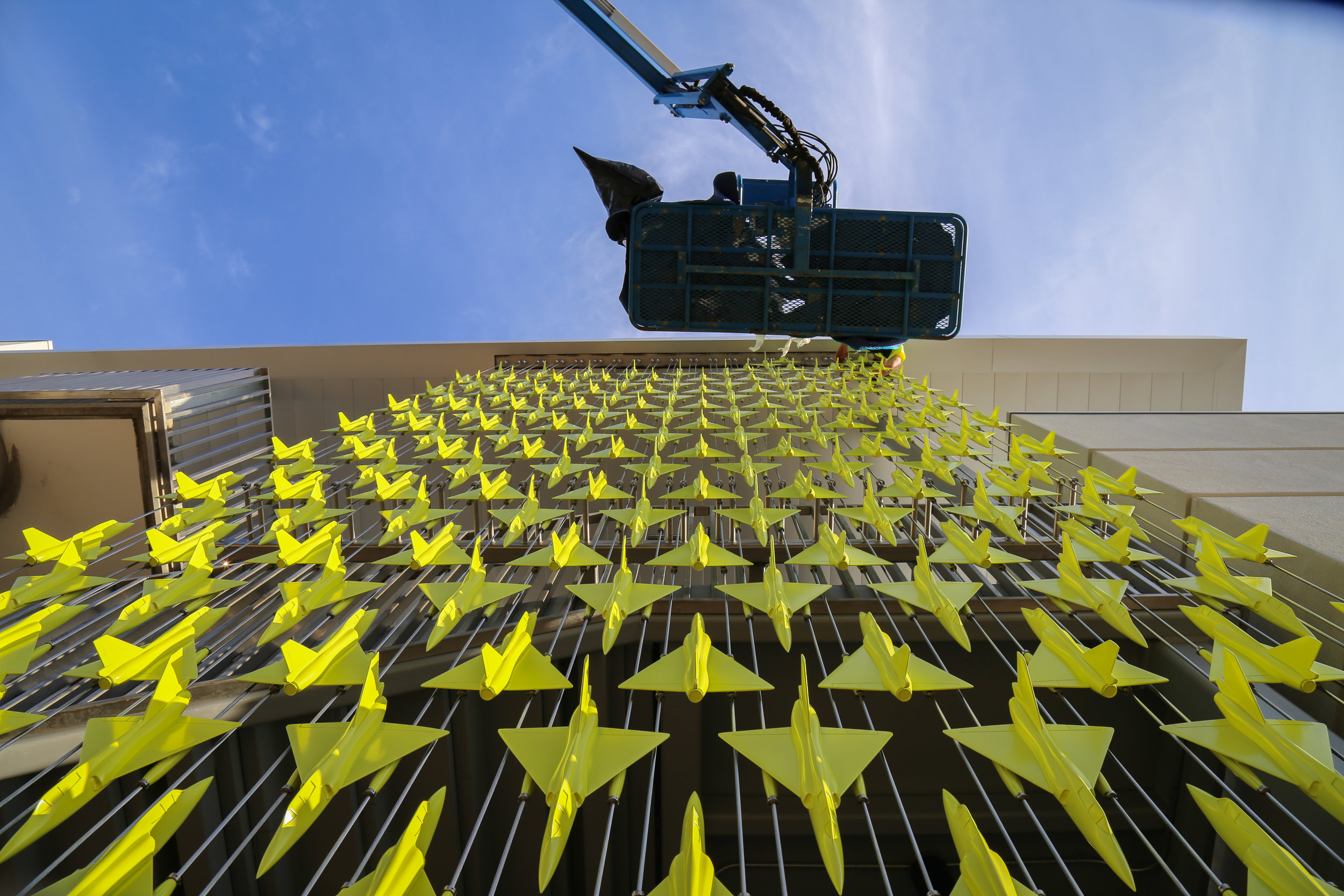
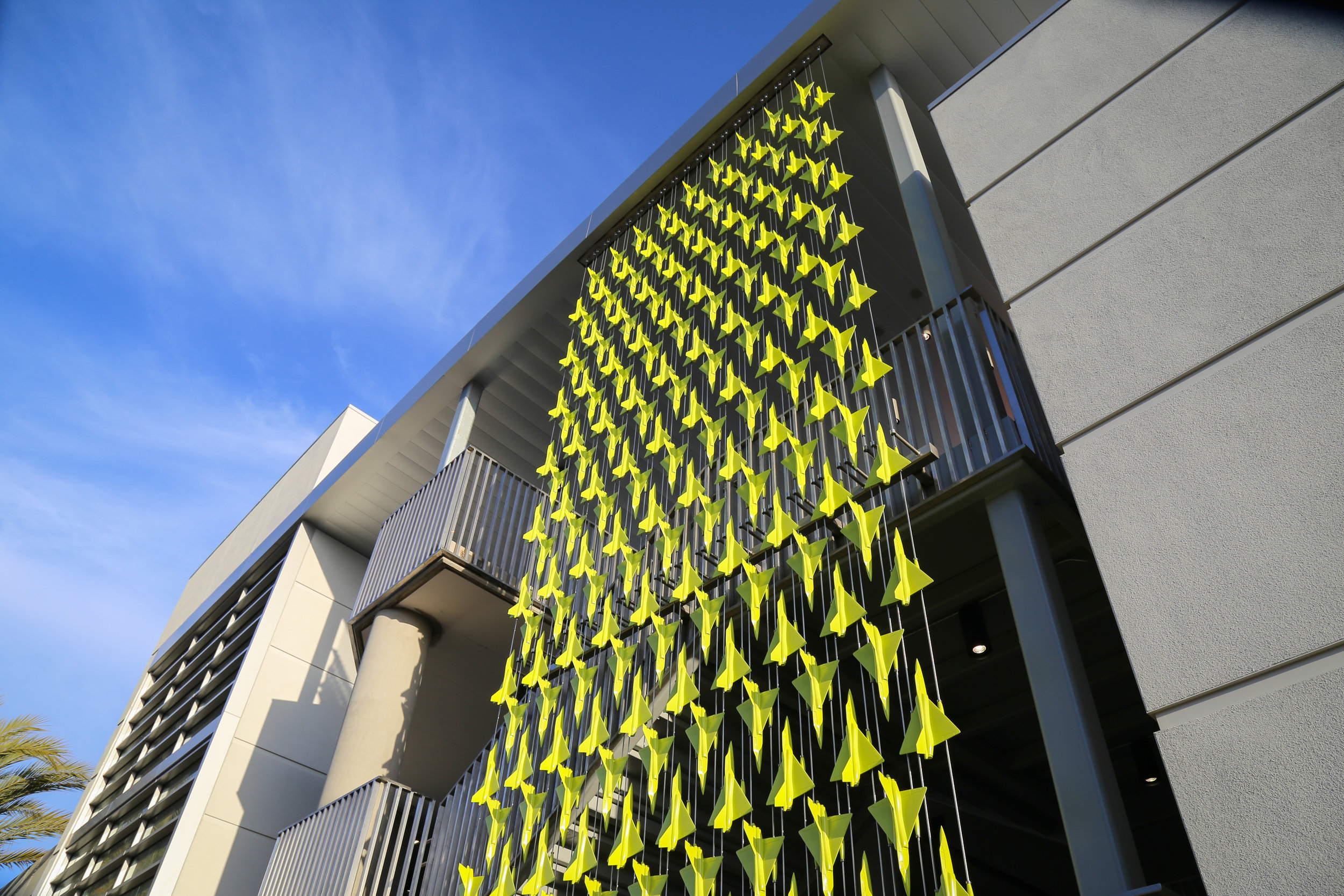
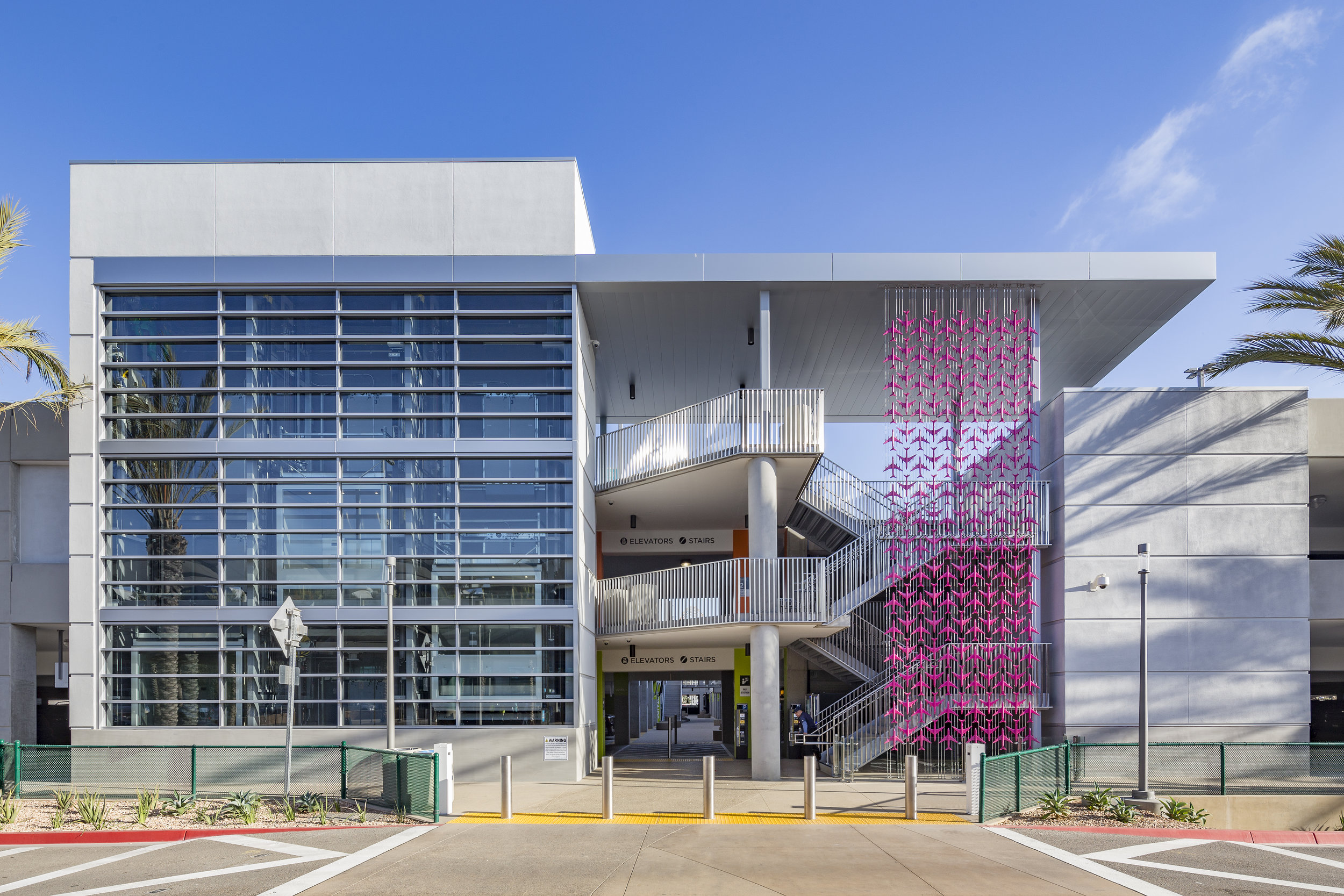

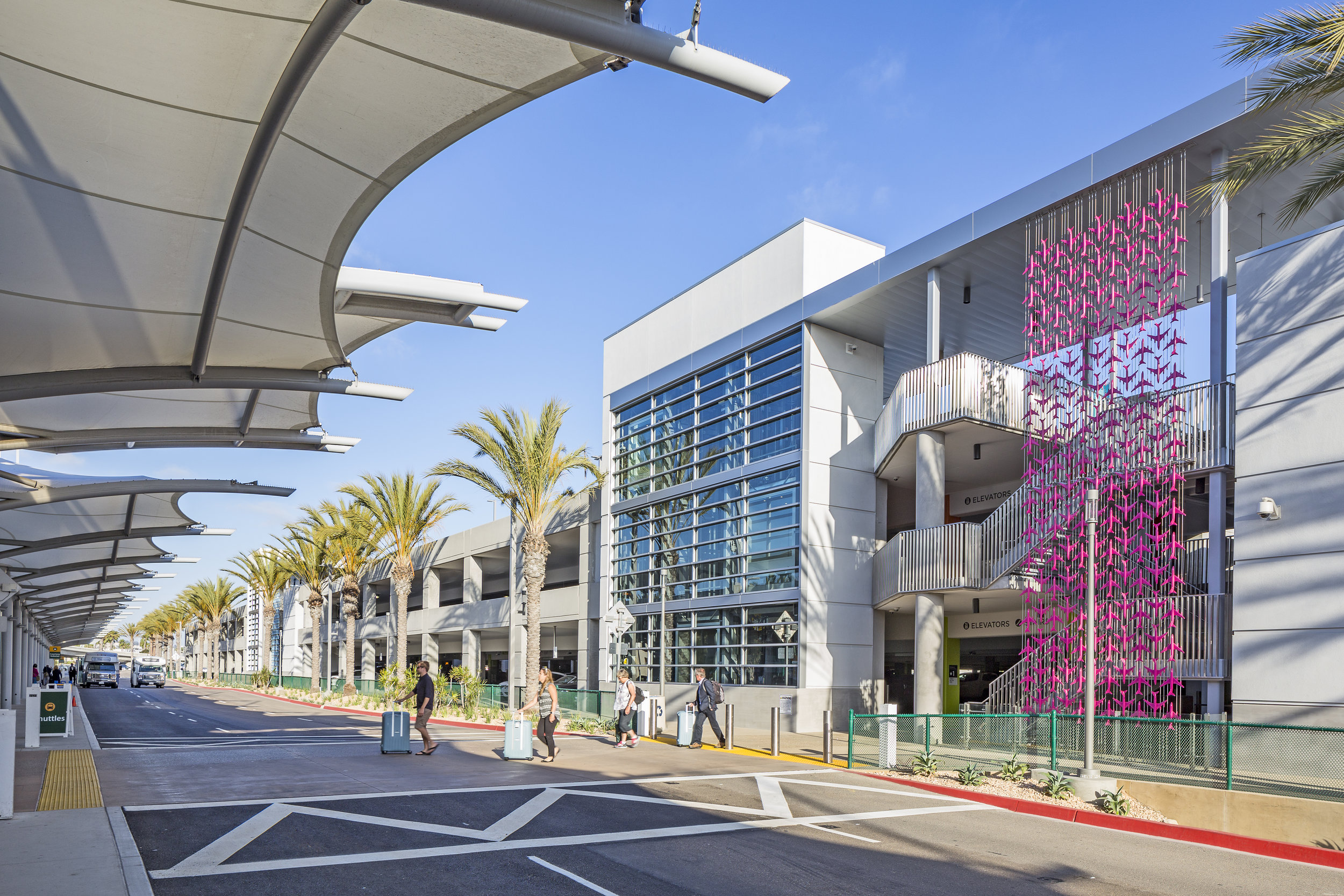
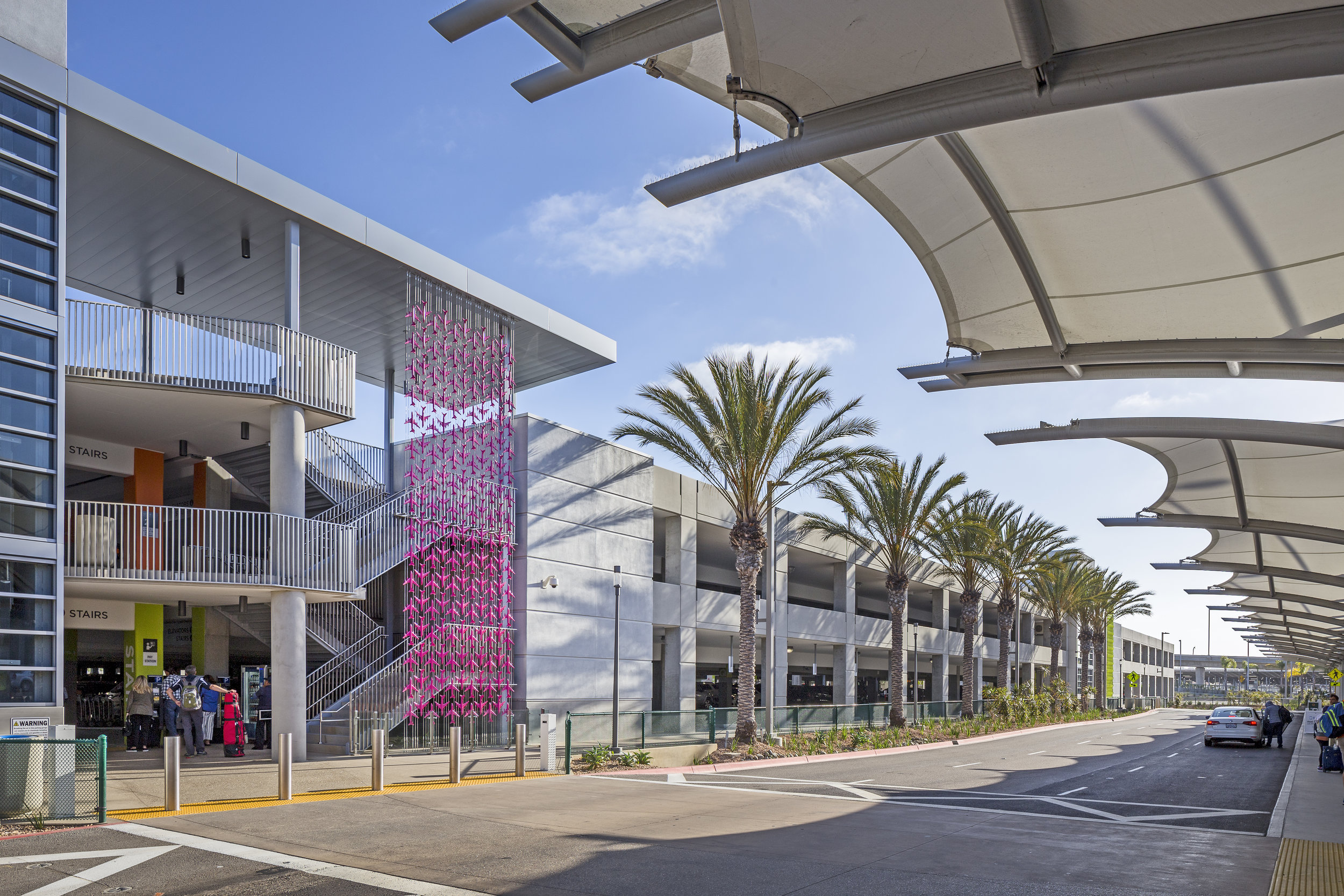
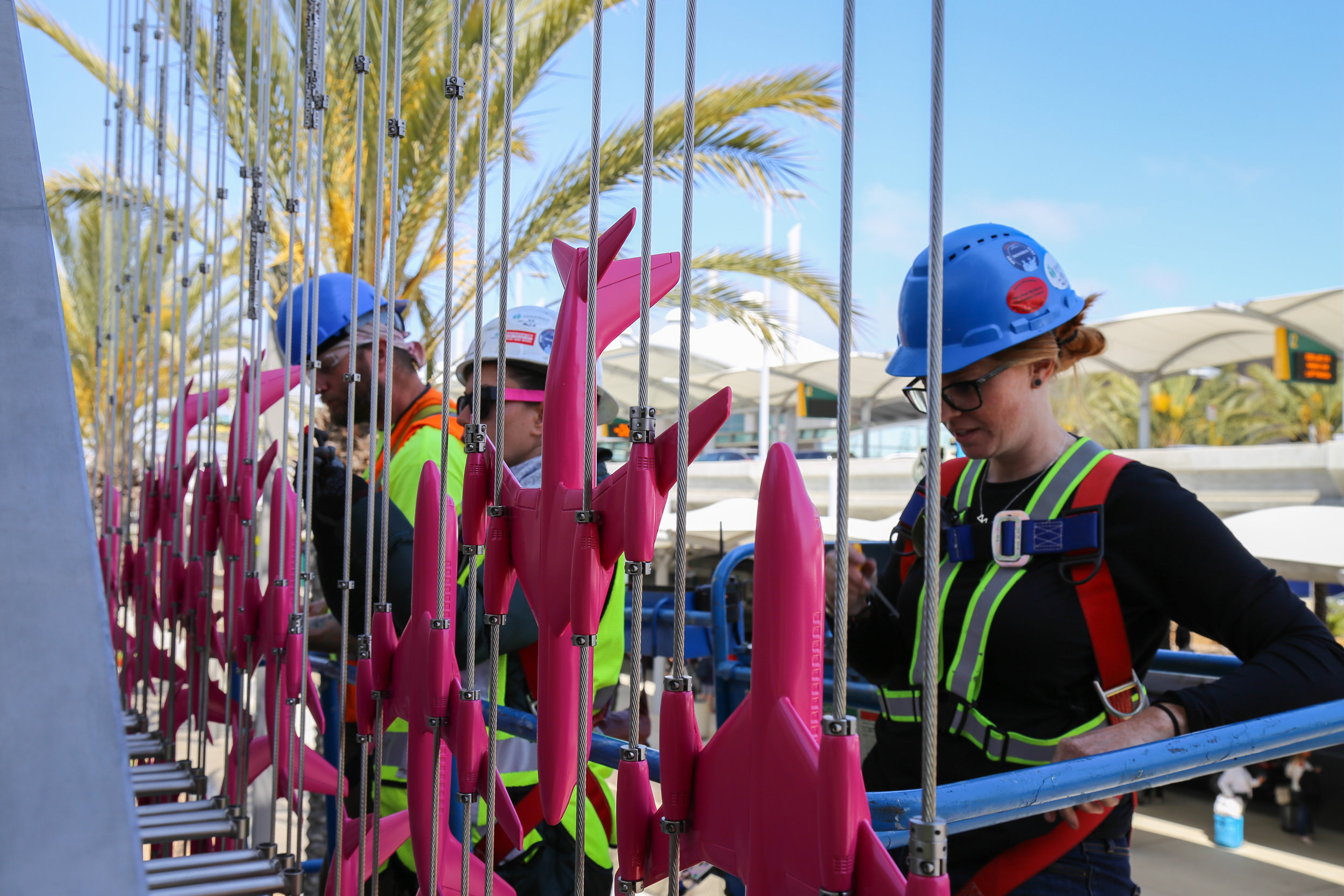
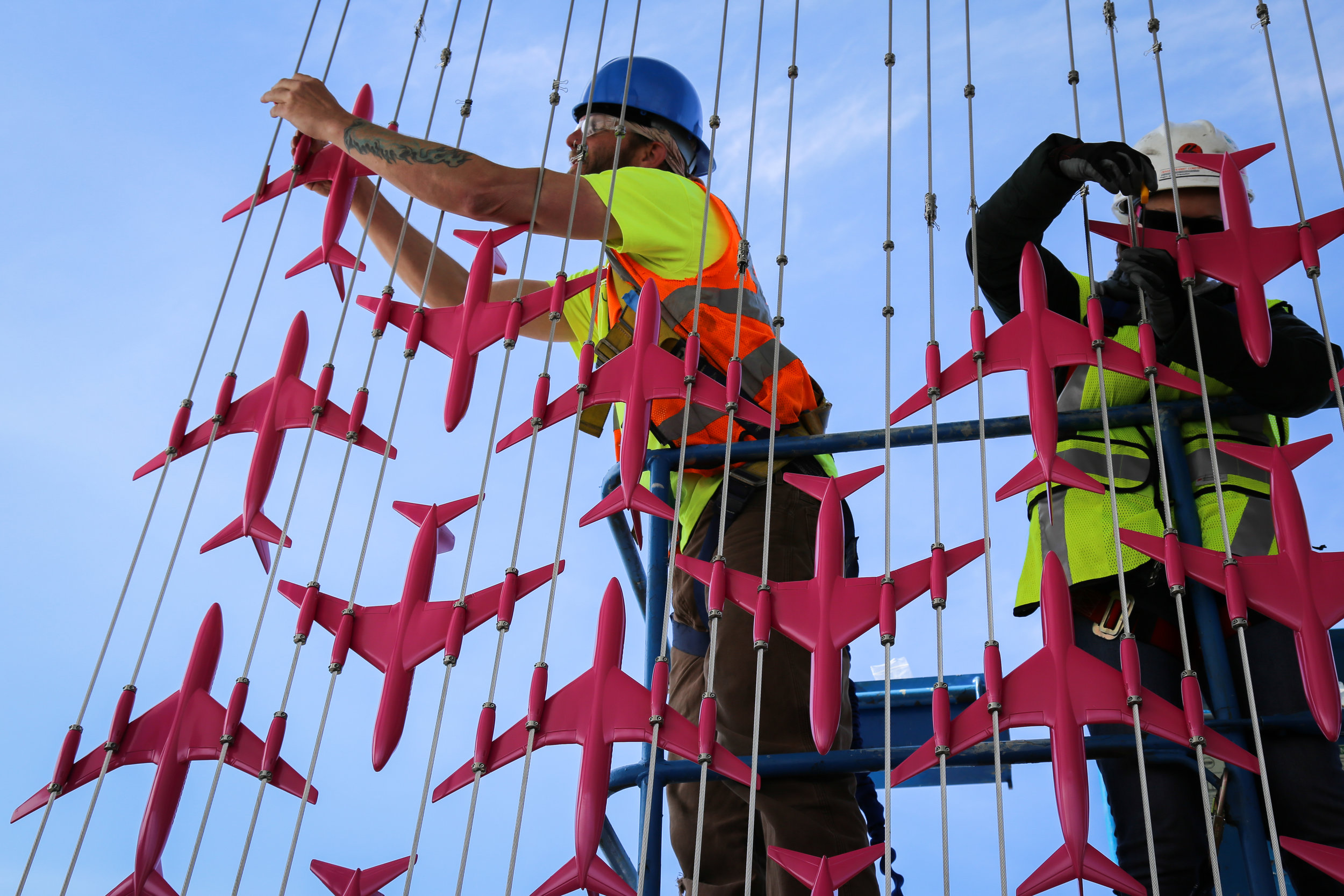
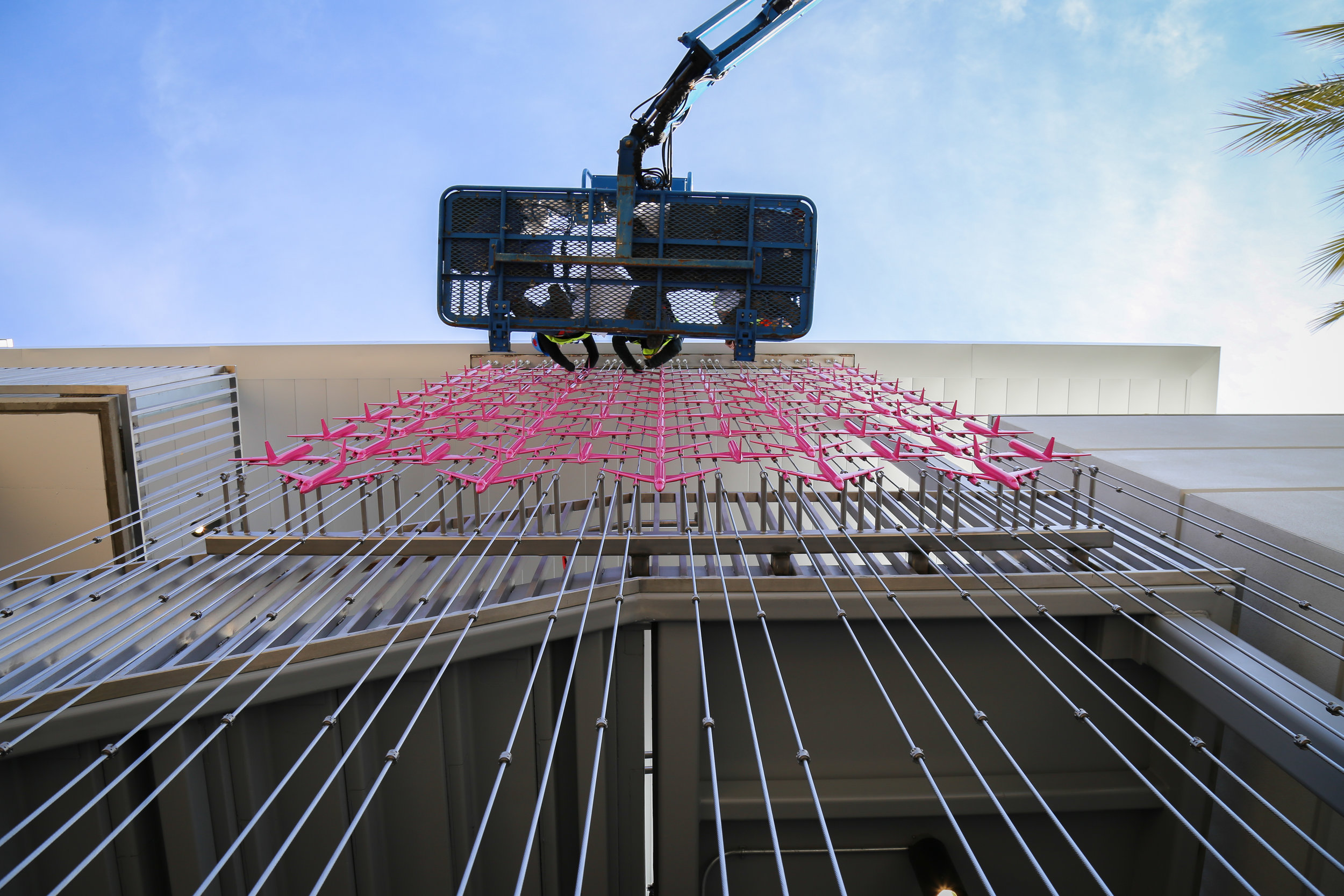
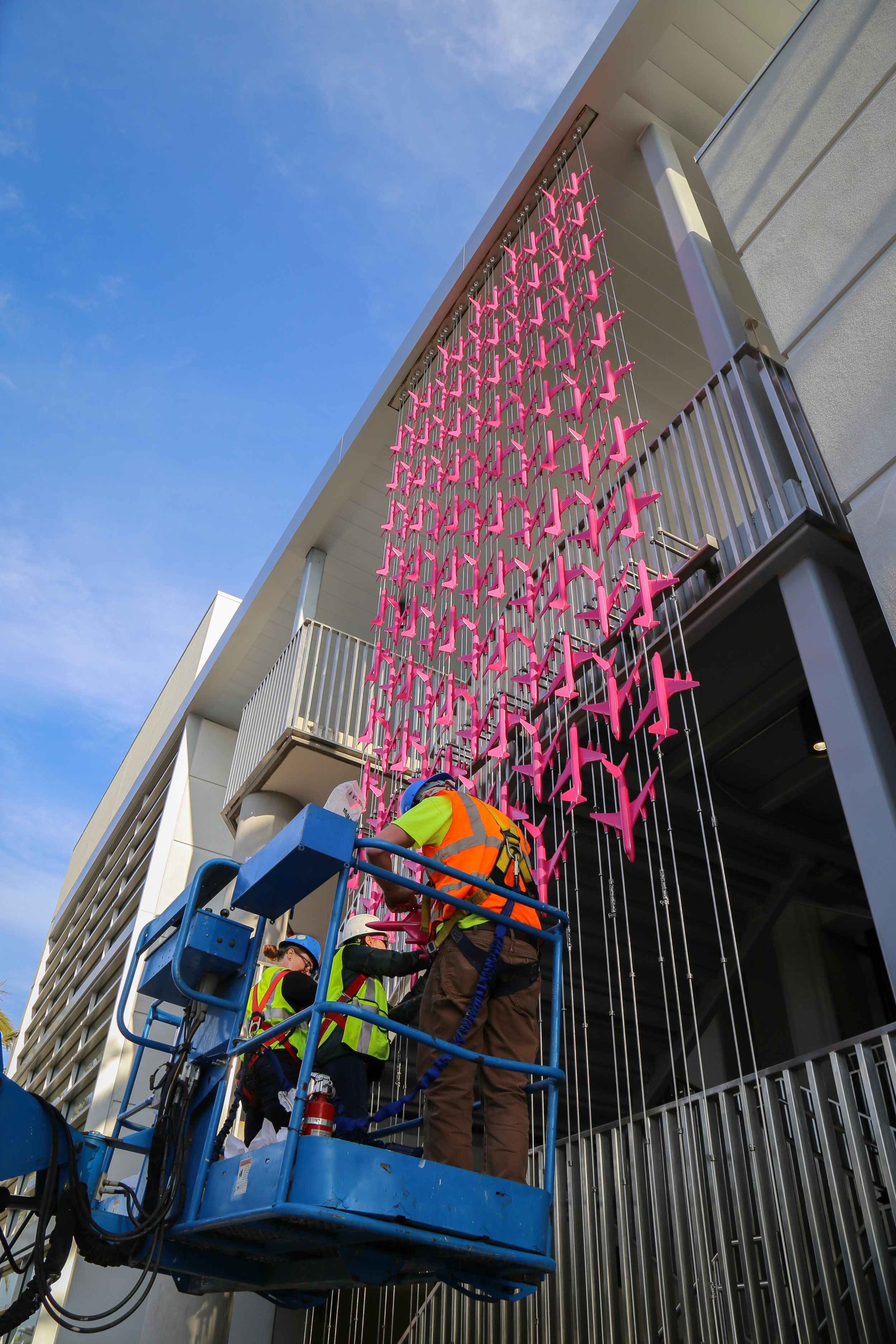
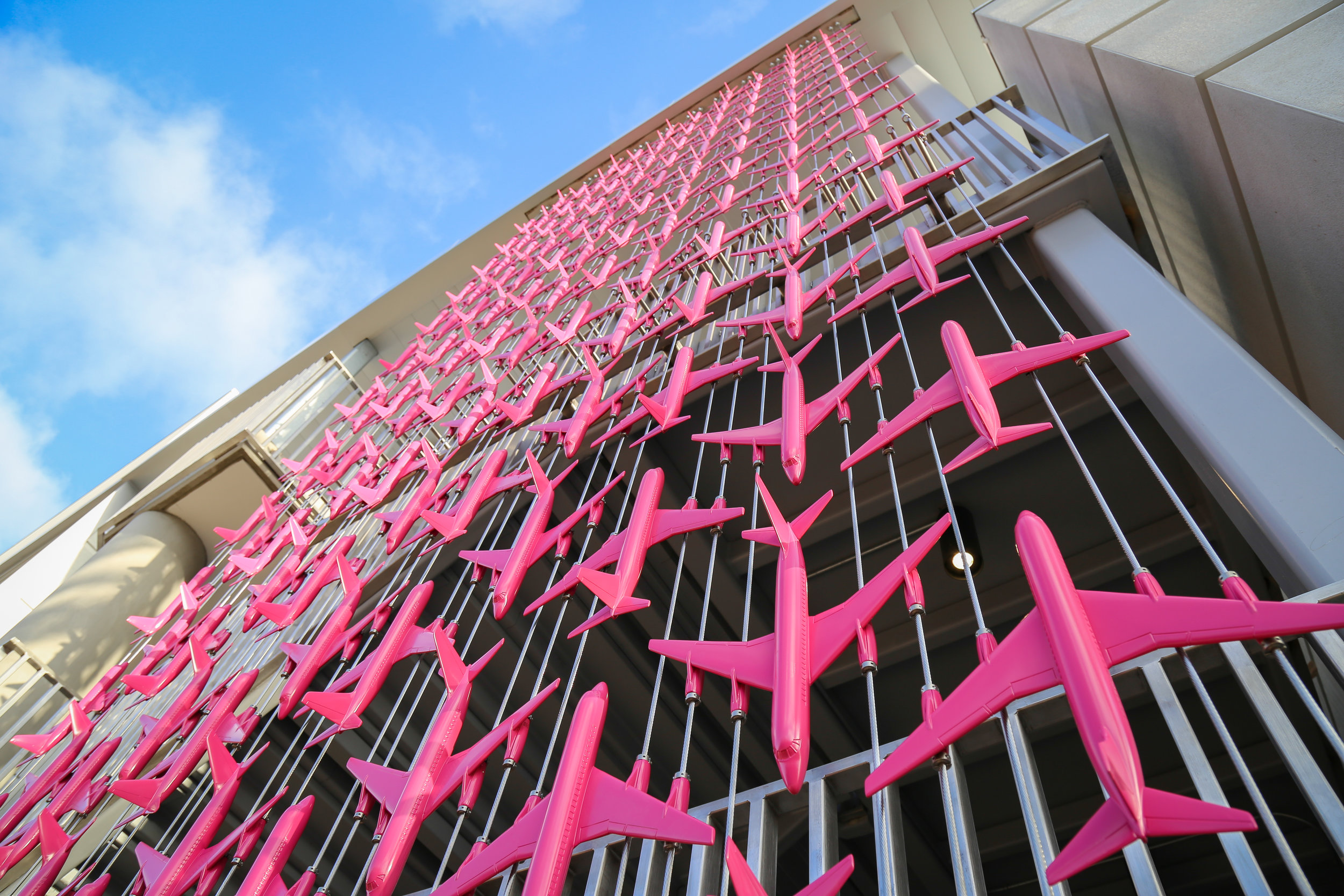
PROJECT PROFILE:
Artist: Mark Reigelman II
Title: Formation
Materials: High Impact Urethane Resin, High Performance Acrylic Urethane Paint, Stainless Steel Cable and Hardware, Mixed Media
Dimensions: Each of 3 screens is approximately 30'(h)x 15'(w) x 6”(d)
Location: San Diego International Airport, San Diego, California
Fabrication: Demiurge and Stratasys
Installation: Demiurge
Commissioner(s): San Diego County Regional Airport Authority
Structural Engineering: Watry Design, Inc.
ARTIST PROFILE:
Mark Reigelman II (American b. 1983)
Mark Reigelman’s work reevaluates the everyday, reinvigorates public space, and challenges typical urban conditions. Emphasizing research and exploration, his diverse body of work is poised between abstraction and literal representation, which he meticulously integrates into civic spaces.
Reigelman has exhibited work in public sites, galleries and museums across the country. His works, Manifest Destiny! (San Francisco, CA), White Cloud (Cleveland, OH), Wood-Pile (Cleveland, OH), Upriver-Downriver (Louisville, KY), Smökers (NYC) Rock Box (Cleveland, OH) and The Meeting House (Boston, MA) have been recognized by the Americans for the Arts as being amongst the 50 most compelling public works across the country making him the youngest artist in history to receive this recognition 7 times. Additional permanent site-specific installations include Blue Skies in East Village San Diego, Sweetwater Park at the former Domino Sugar Factory site in Williamsburg Brooklyn, NY and Gilla in South Phoenix, AZ.
Reigelman has received many prestigious awards including two Windgate Fellowships from the Center of Craft Creativity and Design and the Graue Award from Southern Exposure. His work has been included in exhibitions at the Shanghai Museum of Glass, The Cleveland Museum of Art, The Oklahoma City Museum of Art, The Shelburne Museum, New Britain Museum of American Art, and The Museum of Modern Art (NYC). French clothing company Lacoste recognized Reigelman as the Cultural Innovator of 2013 and he was described in Details magazine as a “visionary thinker whose work has changed the cultural landscape”. His work has been featured in publications including The New York Times, New York Magazine, Frame (Netherlands), L’uomo Vogue (Italy), Public Design (Korea), Télé Star (France), Details, Interior Design, Sculpture and Public Art Now. Reigelman’s work has been highlighted in books such as Uneven Growth: Tactical Urbanisms for Expanding Megacities (MoMA), Unexpected Art: Serendipitous Installations, Site-Specific Works, and Surprising Interventions (Chronicle Books) and Cause and Effect: Visualizing Sustainability (Gestalten).
Mark Reigelman studied sculpture and industrial design at the Cleveland Institute of Art in Cleveland, OH and product design at Central St. Martin’s College of Art and Design in London, UK. The artist lives and works in Brooklyn, New York.
Project Overview:
Formation is a permanent site-specific installation located at San Diego International Airport by American artist Mark Reigelman.
Mark Reigelman’s Formation punctuates the façade of San Diego International Airport’s parking structure with vibrant colors and energetic patterns. As travelers exit the main Airport Terminal they are greeted by massive graphic tapestries on the adjacent Parking Structure. Upon closer inspection, travelers find that each of the three screens that make up the work are composed of hundreds of individually-cast resin airplanes meticulously strung onto Stainless Steel aircraft cables. Formation is uniquely site-specific, in that it weaves together the histories of aeronautical innovation in the region through the specific aircraft models represented with the fiber arts and crafts traditions of indigenous peoples of the American Southwest.
History:
Since the late 1800’s aviation enthusiasts, civilian pilots, military aviators and aeronautic organizations have flocked to San Diego, because of its ideal climate and location, to perform glider tests, experiment with powered flights and explore the limits of aeronautic advancements. For the past 90 years, the San Diego International Airport has served as the front door to the San Diego region. What started as a small, muddy airfield by the San Diego Bay has grown into a major international airport that serves 22 million passengers a year and is the busiest single-runway airport in the United States. But long before the Southwest was drawing aircraft enthusiasts, it was home to dozens of indigenous groups such as the Pueblo, Navajo and, specific to the San Diego region, the Kumeyaay. While these groups left a lasting impression in American history with their ingenuity in farming, hunting, irrigation and architecture it is their weaving traditions that continue to shape the identity in the Southwest.
Concept:
Formation takes inspiration from two distinct and significant parts of San Diego history; indigenous craft and aeronautical technology. The production of fine textiles has been a part of the artistic traditions of the Native American Southwest cultures for thousands of years. While these hand-woven items evolved as groups and neighbors exchanged weaving traditions they often consisted of bold and distinctive shapes complimented with brightly colored pigments. It is this unmistakably unique approach to graphic identity that still permeates the southwestern landscape today. In contrast, the second source of inspiration comes from the high-technology field of aeronautics for which San Diego is known. For the past 130 years people have been traveling to San Diego to develop new aeronautical technologies, test-out innovative aircrafts and to develop and refine flying techniques. Within these flying techniques is formation flying which consists of two or more aircraft under the command of a flight leader flying in a specific arrangement. Formation flying is used in the military as a defense strategy but also performed in airshows because of the awe-inspiring visual experience. Formation combines visual language from historic indigenous weavings and contemporary aeronautics to create a dynamic public art installation that captures San Diego’s history and identity.
Goals:
The site conditions of this artwork required that the artist consider intuitive wayfinding as a central goal. The memorable color choice and patterning of the work as well as its scale and visibility from both the terminal and adjacent roadways aids travelers in recalling the location of their vehicle, particularly upon their return to the structure. Beyond this more functional role, the work fulfills San Diego International Airport’s commitment to commissioning dynamic artwork that is reflective of the region.
Site/Experience:
Formation is comprised of three massive three-dimensional tapestries attached to San Diego International Airport’s cutting-edge Parking Plaza. Acting as the Airport’s “front door” the structure provides a tech-forward parking experience as well as gathering places on the top level where visitors can enjoy unparalleled waterfront views. The artworks are located at the three major pedestrian entry and exit points and situated in a way that maximizes visual impact and offers many vantage points for travelers; pedestrians walking, bikers and drivers can experience the installation. The most exciting perspective will be for passengers and guests exiting the main terminal since they will be greeted by these three brightly colored weavings. From a distance the installation will appear as saturated graphic applications but as interested visitors approach the tapestries they will encounter hundreds of meticulously crafted and painted aircrafts strung onto Stainless Steel aircraft cables.
Selected Aircrafts:
Each of the three tapestries consists of hundreds of individually cast airplane and each aircraft was specifically selected because of its strong connection to the San Diego region. The Ryan NYP (blue), more commonly known as The Spirit of St. Louis, the Convair 880 (pink), which is the same model that Elvis Presley used as his private jet and named Lisa Marie, and the NF 106-B (lime), which was used exclusively for research, were all designed, developed, prototyped and first flown in San Diego. The Ryan NYP was the first aircraft to complete a solo nonstop transatlantic flight between two major cities. The very long, risky and demanding journey stunned and amazed people around the world. Aside from being selected as the private aircraft of Elvis Presley, the Convair 880 was considered the fastest subsonic commercial jet transport in the world. The first Convair 880 set a new commercial speed record during its delivery flight from San Diego to Miami and continued to break records in the subsequent years. The NF-106B, of which only two were ever made, was used by NASA for 30 years and served as a test vehicle for a series of important NASA research projects including the Subsonic Transport and Storm Hazards. The Storm Hazards program was designed to provide date from in-flight measurements of direct-strike lightening characteristics (714 direct hits) to determine the threat lightning strikes posed to aircrafts while also providing data on the location, strength and characteristics of storms. Collectively, these three aircrafts symbolize the past, present and future of aeronautical history and achievement in San Diego.
Process:
This project required a close collaboration between the artist, airport staff from the Arts Program and Design & Construction department, the Joint Venture constructing the larger project, and numerous stakeholders from throughout the airport. The artist also consulted local cultural and historical institutions for assistance with context to inform the artwork design. Reigelman worked with the San Diego Air and Space Museum in researching local aeronautic history to select aircrafts relevant to San Diego and with the San Diego Museum of Man researching Southwest weaving traditions and graphics. Aircraft technical drawings and illustrations from the Museum archives informed the building of planes using three-dimensional modeling programs. Then, Reigelman worked with public art fabrication and installation company, Demiurge, and advanced manufacturing and 3D printing service company, Stratasys. The development process started with a series of full-size 3D prints which allowed the team a chance to adjust scale and refine details based on the casting and installation parameters. Once final prints were complete rubber molds were made and full-size prototypes produced. The team revised the objects, molds and casts, performed a series of stress-tests, and refined the attachment methods until final Urethane prototypes were achieved at which point full-scale production began. Once all the aircrafts were fully cast and cured three custom metal supports were designed and fabricated allowing approximately 12-20 aircrafts to be painted at a time. High Impact Fire Retardant Urethane was used for the airplanes and a brightly colored High Performance Acrylic Urethane for the coatings. Each airplane measures approximately 19” wide, vary in length from 10”-19”and weighs approximately 4lbs each. Once aircrafts were fully cured they were individually soft-packed and placed in large transport crates. Once the objects reached the site it took a team of 8 people 6 days to cut and tension over 90 Stainless Steel aircraft cables and individually attached all 638 airplanes onto the tensioned cabled system. The final installation consists of 3 massive screens, each measuring 15’ wide by 30’ tall, that overlook the main terminal at the San Diego International Airport.
Arts Program at San Diego International Airport:
The offerings of the Arts Program surprise and delight travelers with presentations of the highest caliber and showcase San Diego’s rich cultural community. The program infuses the airport with light, levity, and comfort through public art, temporary exhibitions, and performing arts. SAN’s public art collection includes work by an array of recognized artists including Ball-Nogues Studio, Christian Moeller, Amy Landesberg, Aaron T. Stephan, Jim Campbell, and Ueberall International.
